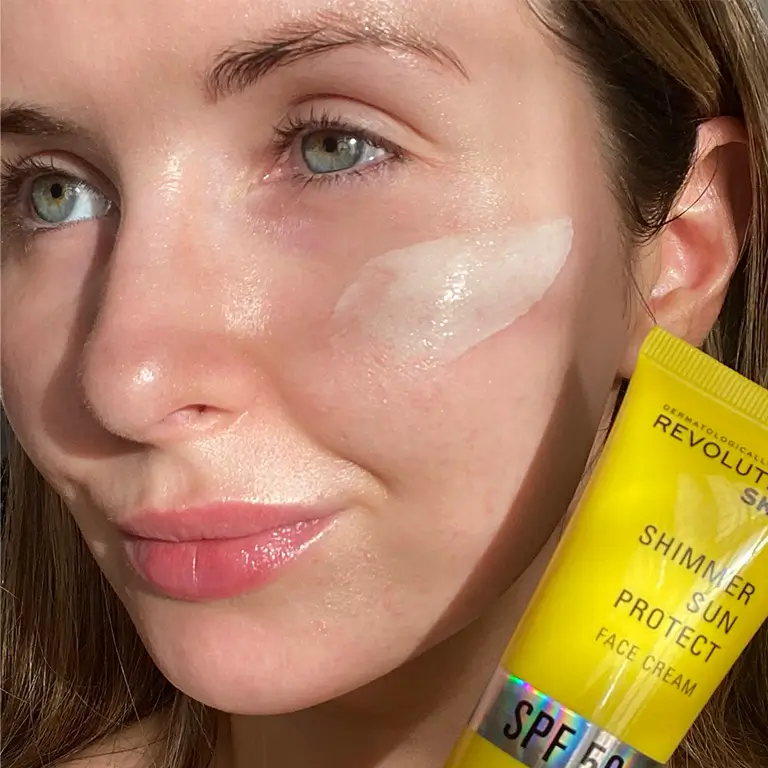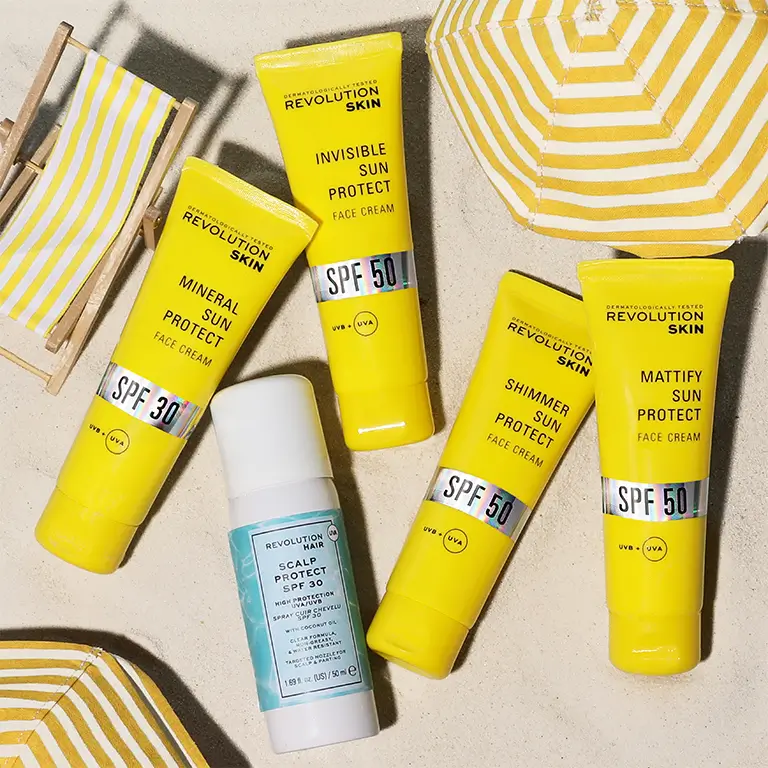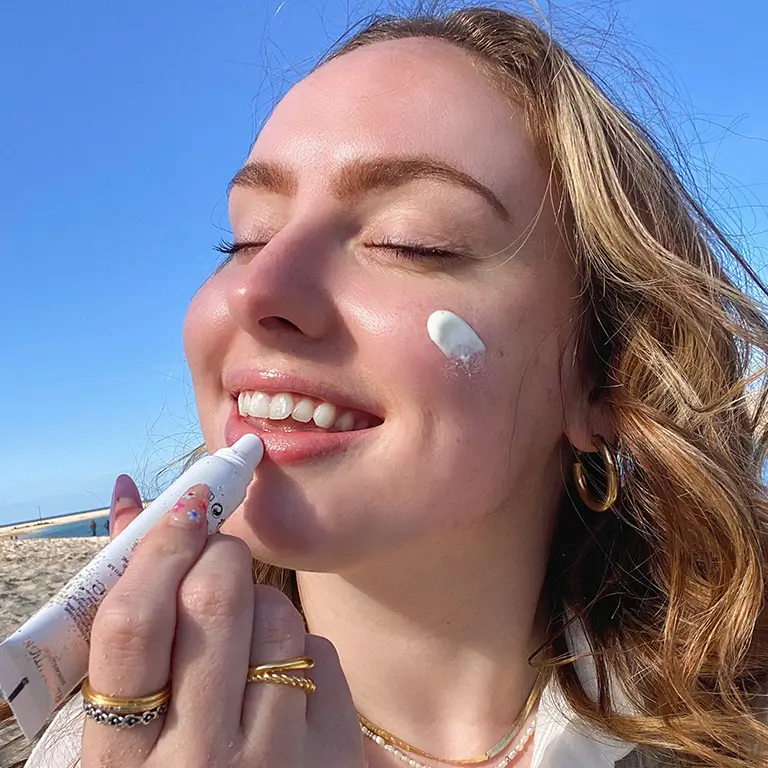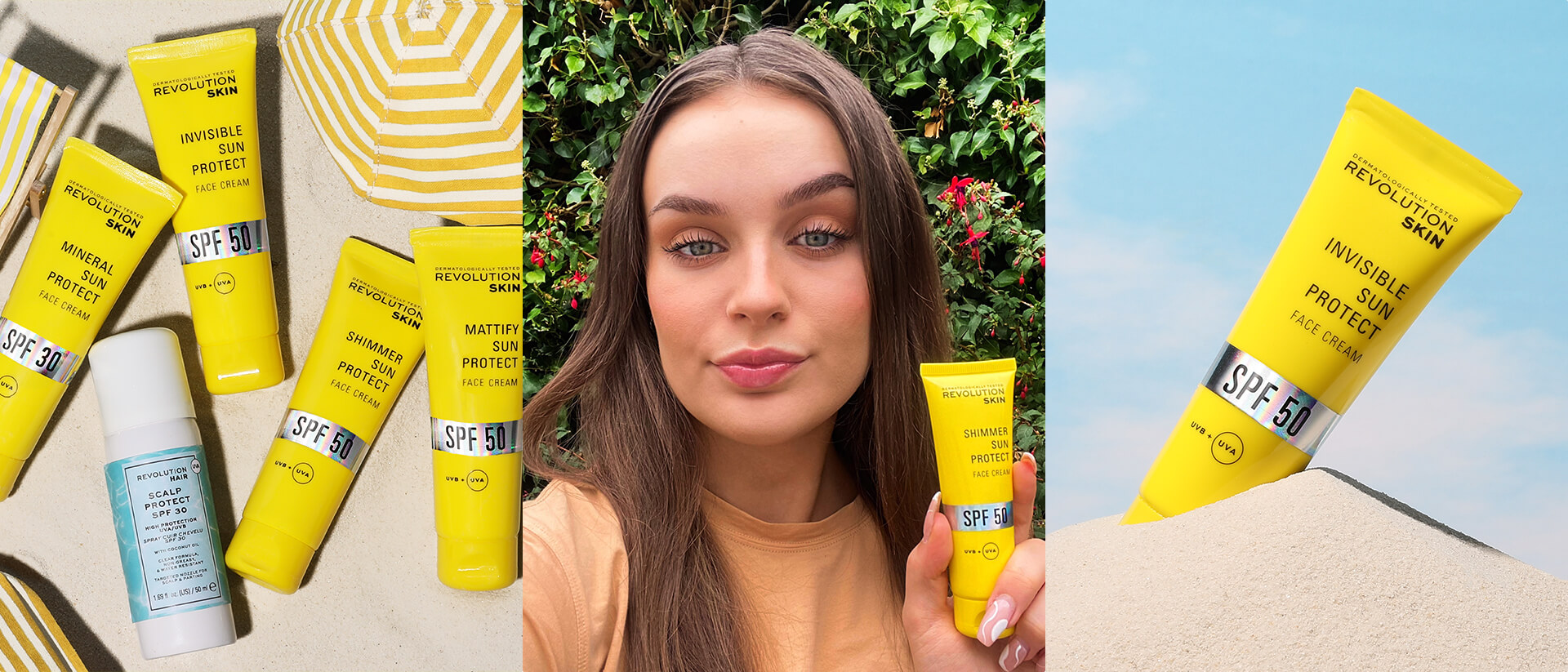Your Ultimate Guide to Sun Protection

When it comes to maintaining healthy skin, SPF is one of the most important steps in your routine. Whether you're enjoying a day at the beach or running errands, sun protection is essential year-round. But what exactly is SPF, and how does it protect your skin? In this guide, we’ll break down everything you need to know about SPF, why it matters, and how to make sure you’re using it effectively.
SHOP ALL SPF SKINCARE
What is SPF?

SPF, or Sun Protection Factor is a measure of how well a product protects your skin from harmful UVB rays—the ones responsible for sunburn and skin damage. The higher the SPF, the greater the protection it offers. For daily use, an SPF of 30 is generally recommended as the minimum, as it blocks about 97% of UVB rays according to this study.

Why You Need SPF Every Day
SPF isn’t just for sunny days. Ultraviolet (UV) rays can penetrate through clouds and even windows, so daily protection is crucial. Here’s why SPF should be an essential part of your routine:
Prevents Sunburn: Even minimal sun exposure can lead to burning if your skin is unprotected.
Reduces Premature Aging: Fine lines, wrinkles, and sunspots are often a result of cumulative sun damage. SPF helps to prevent this.
Lowers Skin Cancer Risk: Studies show that regular use of SPF can significantly reduce the risk of developing skin cancer over time.
How Does SPF Actually Work?
SPF acts as a barrier that either absorbs, reflects, or scatters UV rays, reducing the damage they can cause to your skin. While no SPF blocks 100% of the rays, a high SPF still gives your skin a strong line of defence.
Decoding SPF Numbers
Here’s the breakdown:
SPF 15: Blocks about 93% of UVB rays.
SPF 30: Blocks about 97% of UVB rays.
SPF 50: Blocks about 98% (so not that much higher, right?).
Expert Tip: Higher SPF doesn’t mean you can stay in the sun longer without burning. You still need to reapply it every two hours—especially if you’re swimming or sweating.
How to Use SPF in Your Routine
Following our 4-step simple skincare routine, we recommend applying an SPF. This ensures you have all the benefits from your skin routine and the protection from the SPF before you start applying your makeup.
How Often Should You Reapply?
The key to good sun protection isn’t just applying SPF in the morning—it’s reapplying it throughout the day. Every two hours is the magic number, especially if you’re spending time outdoors or in water.
Can You Skip SPF When It’s Cloudy?
Nope! UV rays still reach your skin even when the sun’s hiding behind clouds. Make SPF part of your everyday skincare routine, rain or shine.
How Much SPF Do You Really Need?
Most people don’t apply enough sunscreen to achieve the full level of protection. For your face, use two fingers worth (full length, imagine the ‘peace’ sign!), and for your entire body, aim for roughly two tablespoons worth. Don’t forget commonly missed areas like the ears, neck, and the backs of your hands, which are frequently exposed to the sun but often overlooked. Even the soles of your feet could benefit if you are likely to lie down at the beach or at the side of a pool.
Side Effects of SPF
While SPF is vital for skin protection, not all formulas suit every skin type. Chemical sunscreens, in particular, can sometimes cause breakouts or irritation. For those with sensitive skin or have acne-prone skin, mineral sunscreens with zinc oxide or titanium dioxide are often better options because they sit on the skin rather than being absorbed.
Expert Tip: Patch test new sunscreen formulas on a small area of your skin before applying it all over to avoid irritation or allergic reactions.
Skincare Ingredients That Pair Perfectly with SPF
SPF works well with several other skincare ingredients that can help enhance its effectiveness or provide additional benefits:
Vitamin C: This powerful antioxidant helps neutralize free radicals from sun exposure, making it an excellent morning pairing with SPF
Hyaluronic Acid: Keeps your skin hydrated and balanced while providing a smooth base under sunscreen.
Niacinamide: Calms and soothes the skin, reducing the potential for irritation, especially after sun exposure.
Expert Tip: For maximum protection and brightening benefits, apply Vitamin C serum in the morning before your sunscreen. This combination helps to fight both UV damage and environmental stressors. (Be sure to patch test vitamin c serum on your skin too!)
Ingredients You Shouldn’t Mix with SPF
SPF works well with several other skincare ingredients that can help enhance its effectiveness or provide additional benefits:
Retinol: This powerful antioxidant helps neutralize free radicals from sun exposure, making it an excellent morning pairing with SPF
AHAs/BHAs: Exfoliating acids like glycolic acid or salicylic acid can increase your skin’s sensitivity to UV rays. Try switching your skin routine with these ingredients to the evening and follow up with SPF in the morning.
Benzoyl Peroxide:This acne-fighting ingredient can reduce the effectiveness of sunscreen. It's best used at night, with SPF applied during the day.
Picking the Right SPF for Your Skin

Choosing the right SPF depends on your skin type:
Oily Skin: Opt for an oil-free, mattifying spf to help control shine throughout the day.
Dry Skin: Look for hydrating sunscreens with ingredients like hyaluronic acid to maintain moisture levels.
Sensitive Skin: Mineral sunscreens are less likely to cause irritation, making them ideal for those with reactive skin.
SPF is more than just a summer essential—it’s your skin’s daily defence against the harmful effects of UV radiation, including sunburn, premature aging, and skin cancer. Whether it’s sunny or cloudy, SPF should always be a part of your skincare routine to ensure long-term skin health and radiance.
Ready to incorporate SPF into your routine? Explore our selection of SPF products designed to protect and nourish your skin every day.
SHOP ALL SPF SKINCARE
Take care in the sun,
Love, Team Rev x







